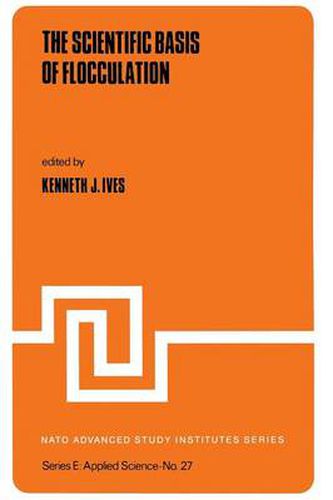Readings Newsletter
Become a Readings Member to make your shopping experience even easier.
Sign in or sign up for free!
You’re not far away from qualifying for FREE standard shipping within Australia
You’ve qualified for FREE standard shipping within Australia
The cart is loading…






This title is printed to order. This book may have been self-published. If so, we cannot guarantee the quality of the content. In the main most books will have gone through the editing process however some may not. We therefore suggest that you be aware of this before ordering this book. If in doubt check either the author or publisher’s details as we are unable to accept any returns unless they are faulty. Please contact us if you have any questions.
K.J. Ives Professor of Public Health Engineering University College London The aggregation of small particles in liquids, to form flocs which are large enough to settle, or to be filtered, is a common operation in industrial processes, and water and wastewater treatment. This aggregation, given the general title flliocculation in this book, may be brought about by the addition of chemicals to reduce the stability of the original suspension, by neutralising electrical forces of repulsion, by the addition of chemicals (polymers) to link particles by bridging action, by the addition of chemicals which form particles to increase collision proba bilities, and by the input of energy leading to hydrodynamically induced collisions. The particles undergoing flocculation may range from colloidal in the nanometer size range, through micro scopic (micron) size, up to visible particles in the millimeter size range; that is a total size range of six orders of magnitude. Consequently the colloid chemist and the hydrodynamicist are both concerned with the interactions that take place, and to them the engineer must turn, to obtain the fundamental information ne cessary for the process design and its associated hardware.
$9.00 standard shipping within Australia
FREE standard shipping within Australia for orders over $100.00
Express & International shipping calculated at checkout
Stock availability can be subject to change without notice. We recommend calling the shop or contacting our online team to check availability of low stock items. Please see our Shopping Online page for more details.
This title is printed to order. This book may have been self-published. If so, we cannot guarantee the quality of the content. In the main most books will have gone through the editing process however some may not. We therefore suggest that you be aware of this before ordering this book. If in doubt check either the author or publisher’s details as we are unable to accept any returns unless they are faulty. Please contact us if you have any questions.
K.J. Ives Professor of Public Health Engineering University College London The aggregation of small particles in liquids, to form flocs which are large enough to settle, or to be filtered, is a common operation in industrial processes, and water and wastewater treatment. This aggregation, given the general title flliocculation in this book, may be brought about by the addition of chemicals to reduce the stability of the original suspension, by neutralising electrical forces of repulsion, by the addition of chemicals (polymers) to link particles by bridging action, by the addition of chemicals which form particles to increase collision proba bilities, and by the input of energy leading to hydrodynamically induced collisions. The particles undergoing flocculation may range from colloidal in the nanometer size range, through micro scopic (micron) size, up to visible particles in the millimeter size range; that is a total size range of six orders of magnitude. Consequently the colloid chemist and the hydrodynamicist are both concerned with the interactions that take place, and to them the engineer must turn, to obtain the fundamental information ne cessary for the process design and its associated hardware.